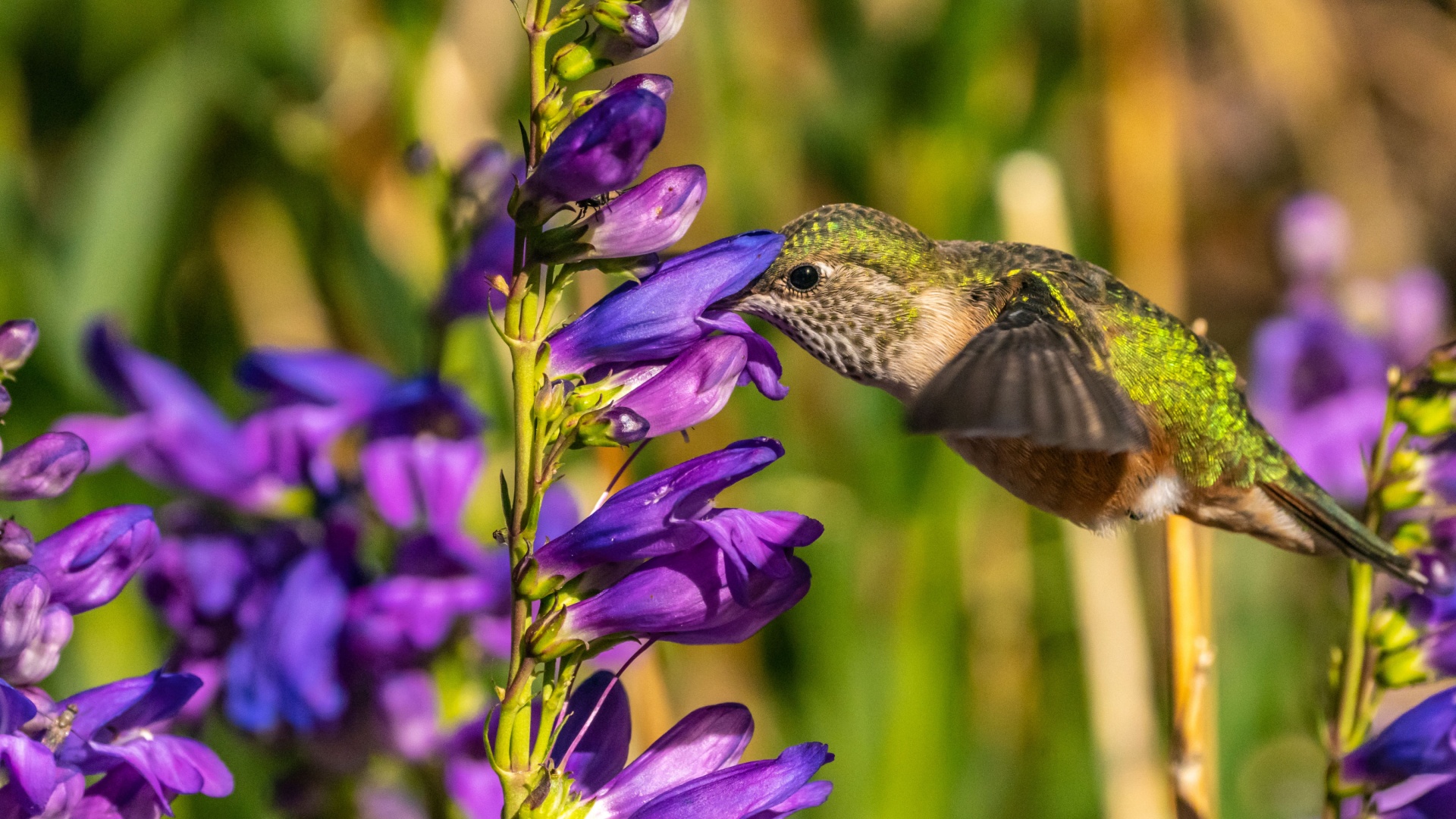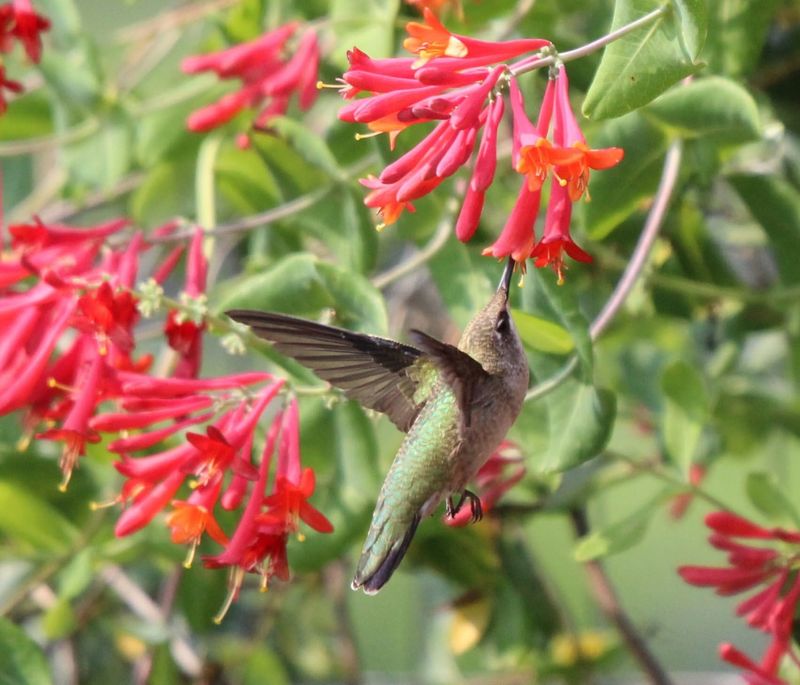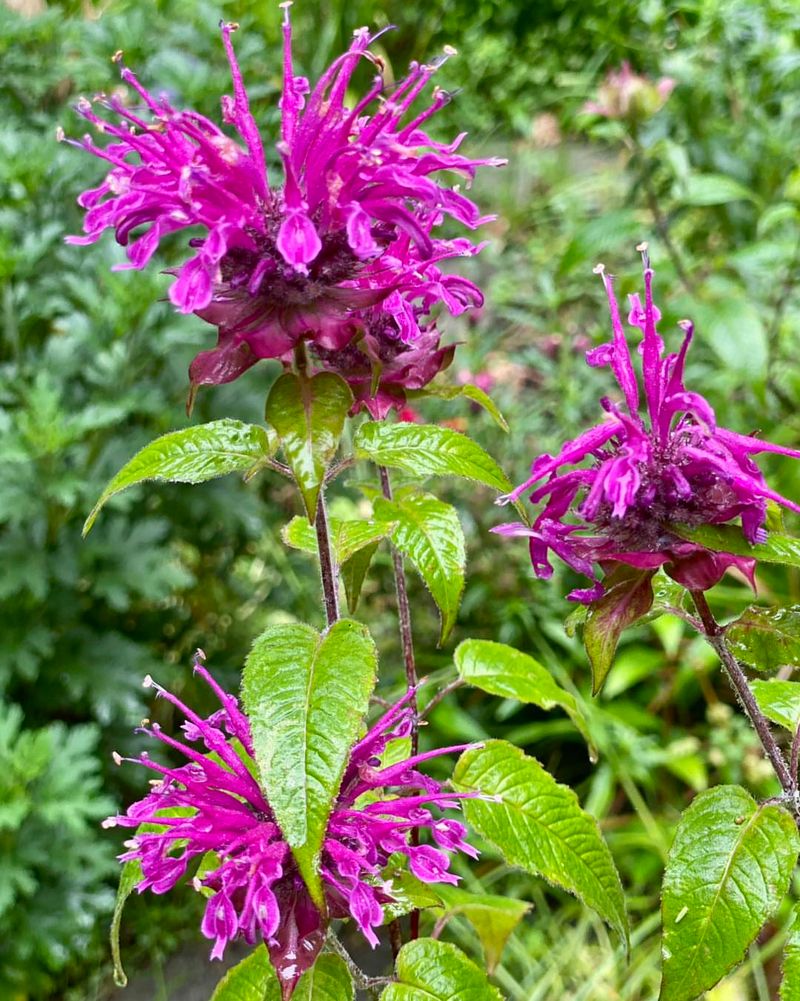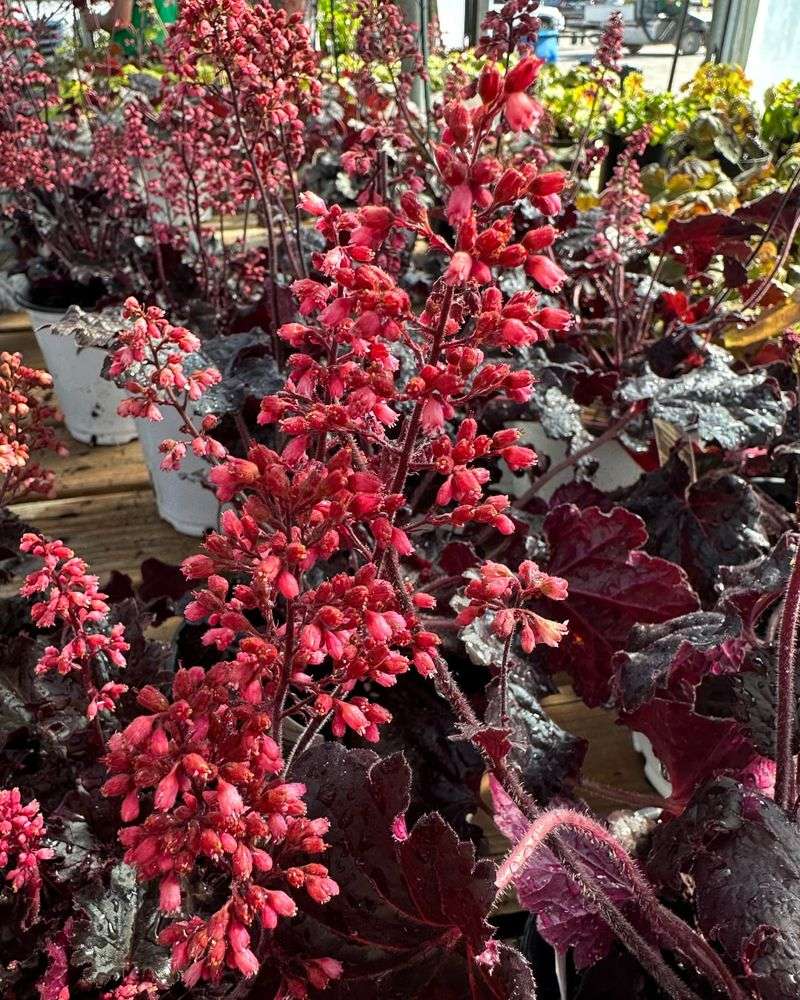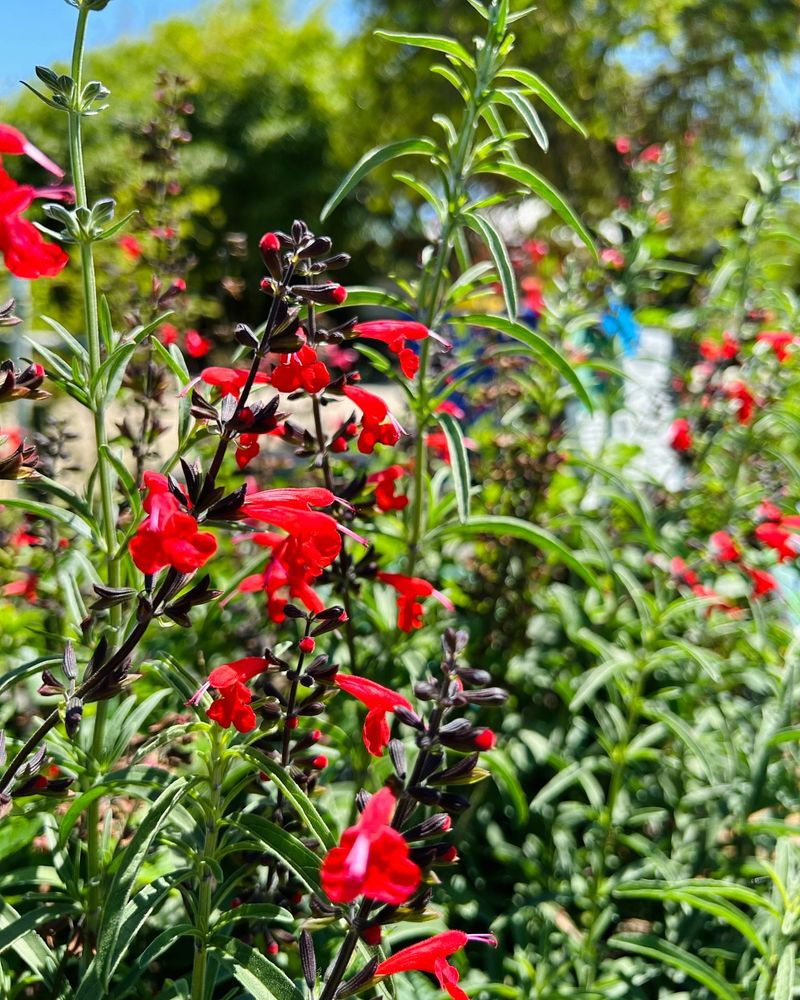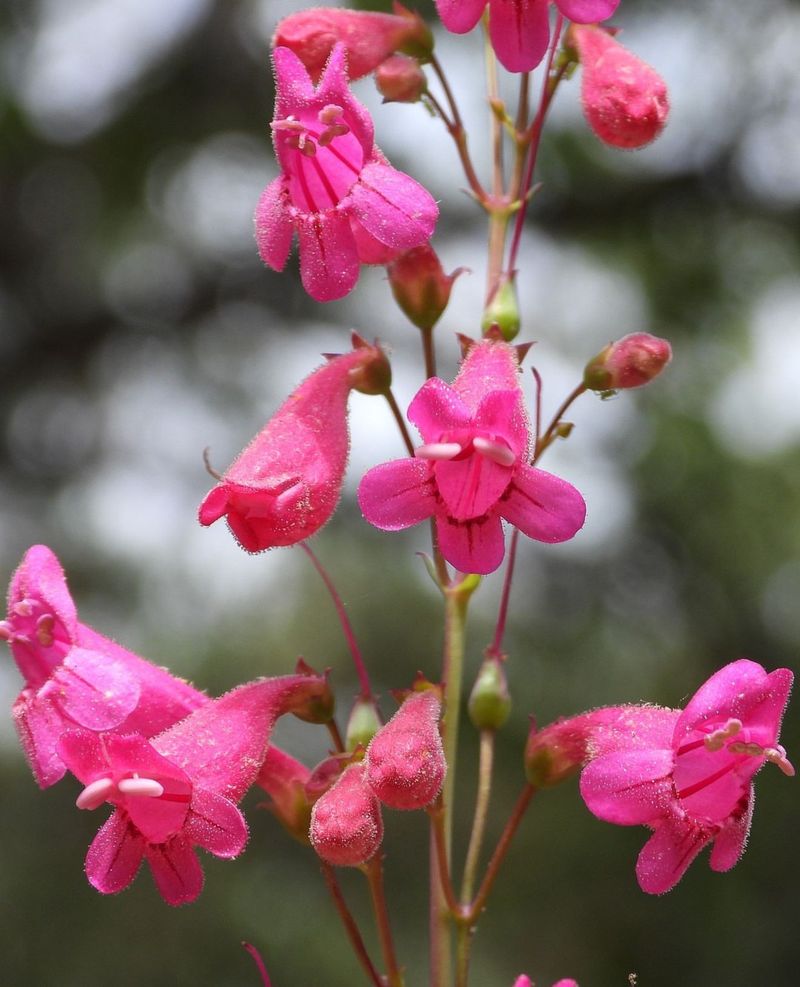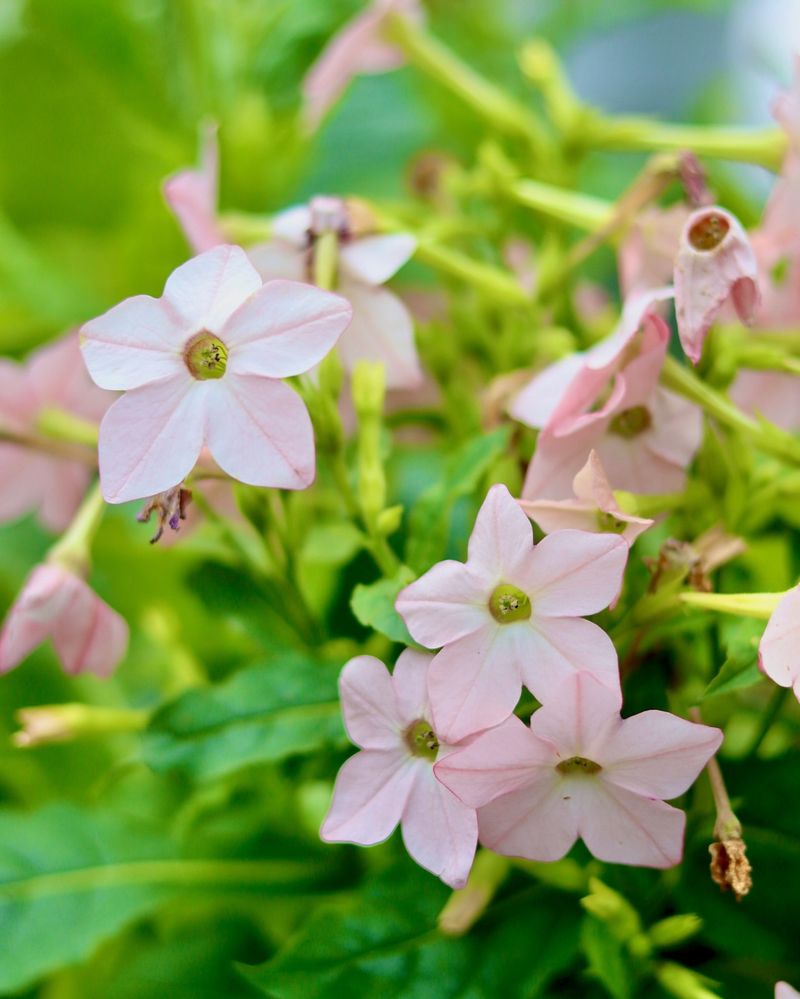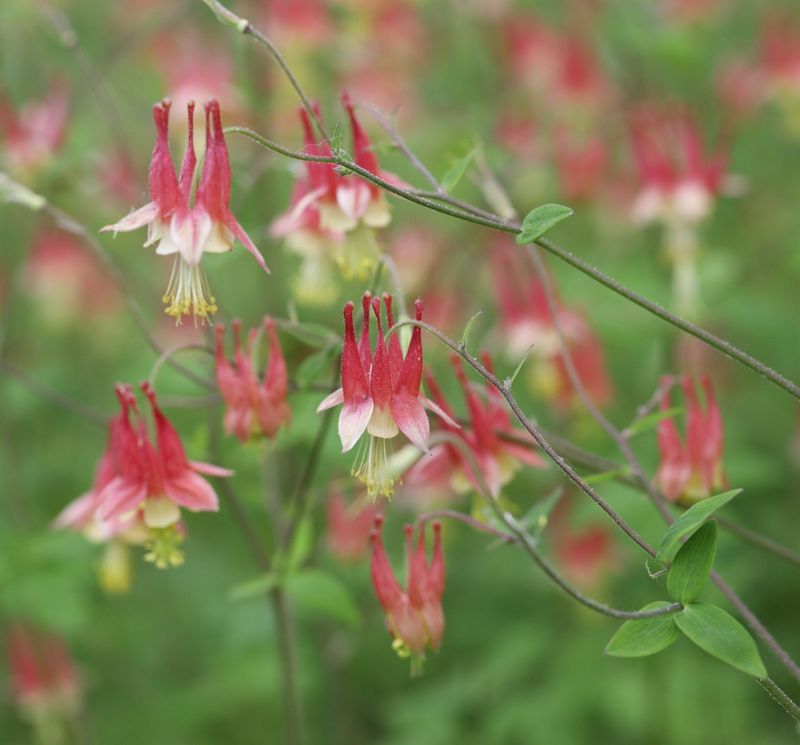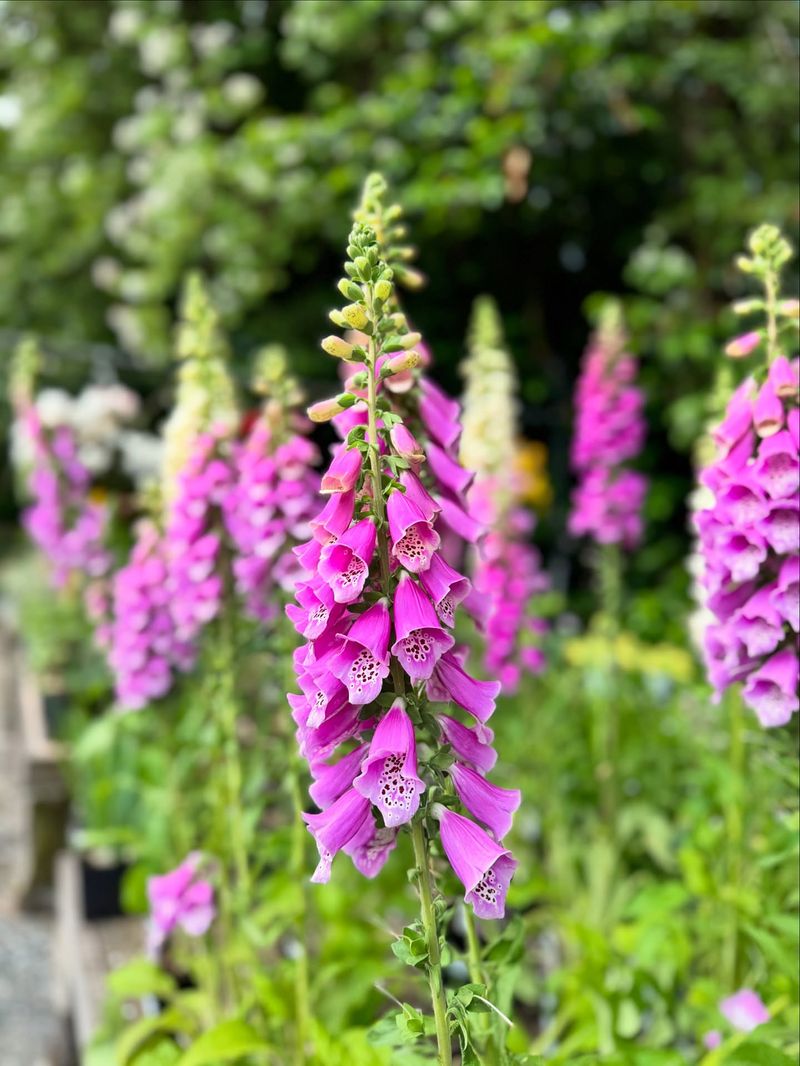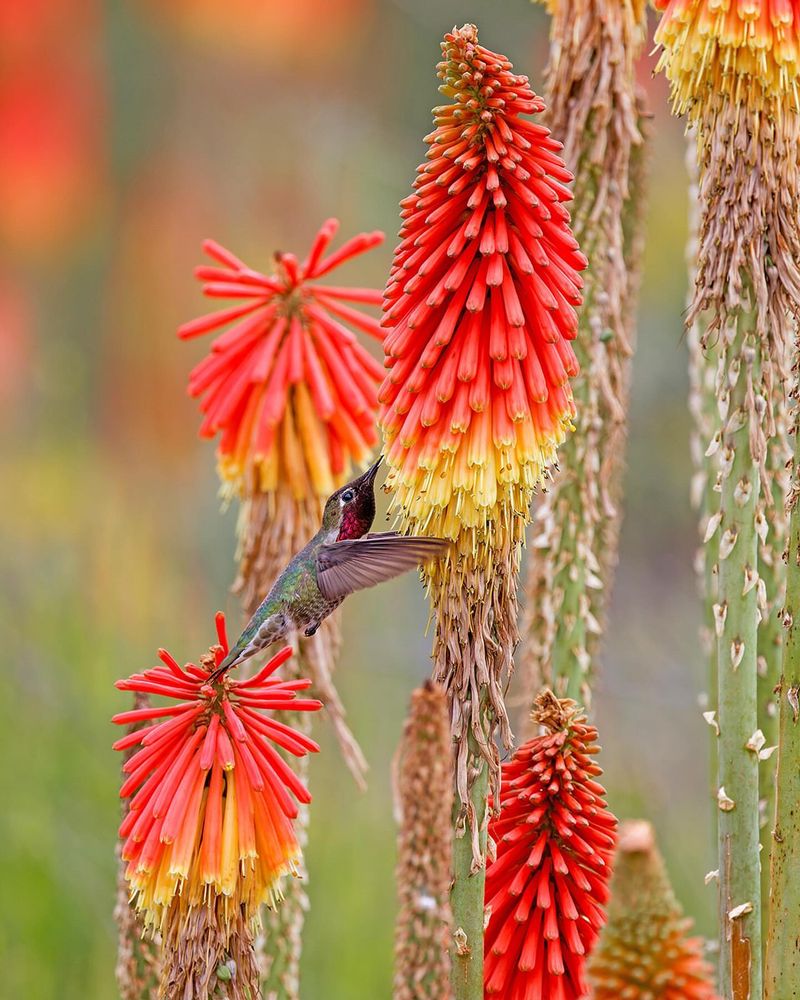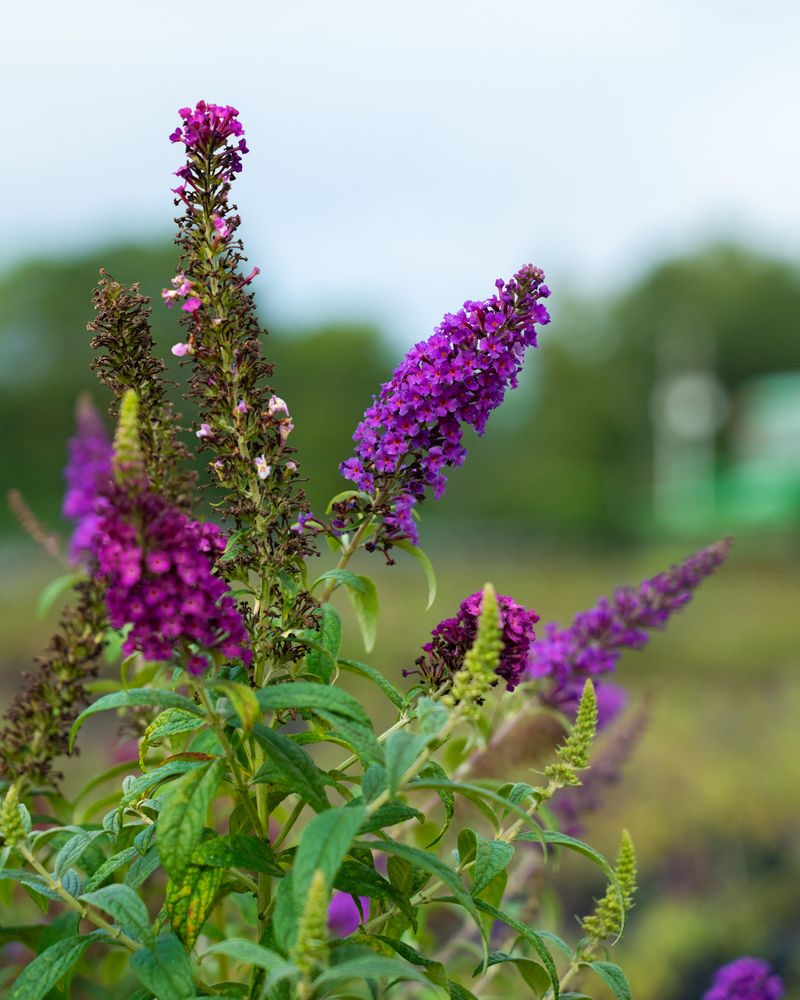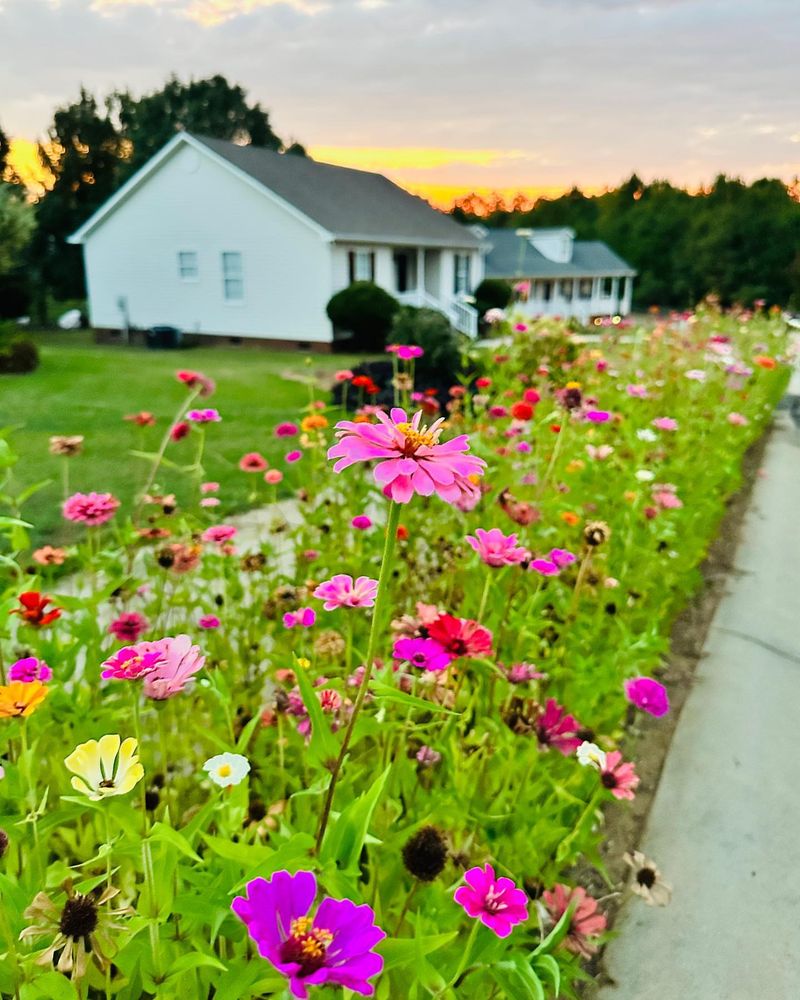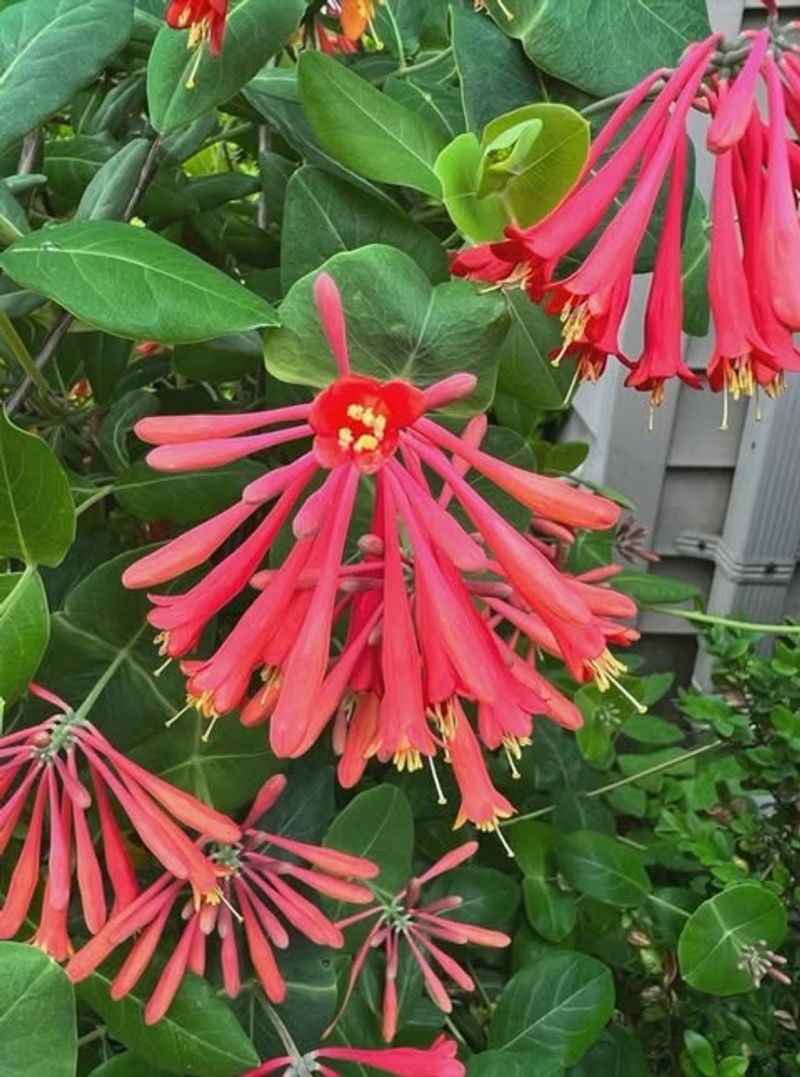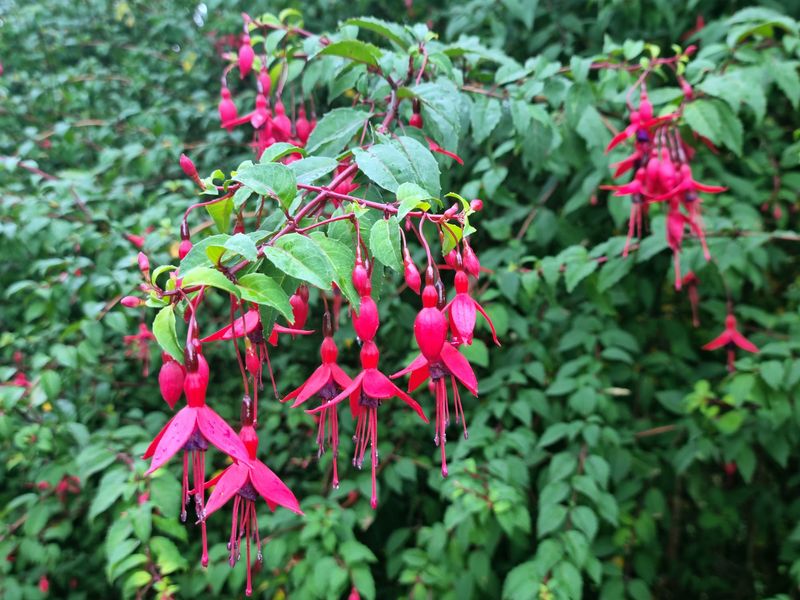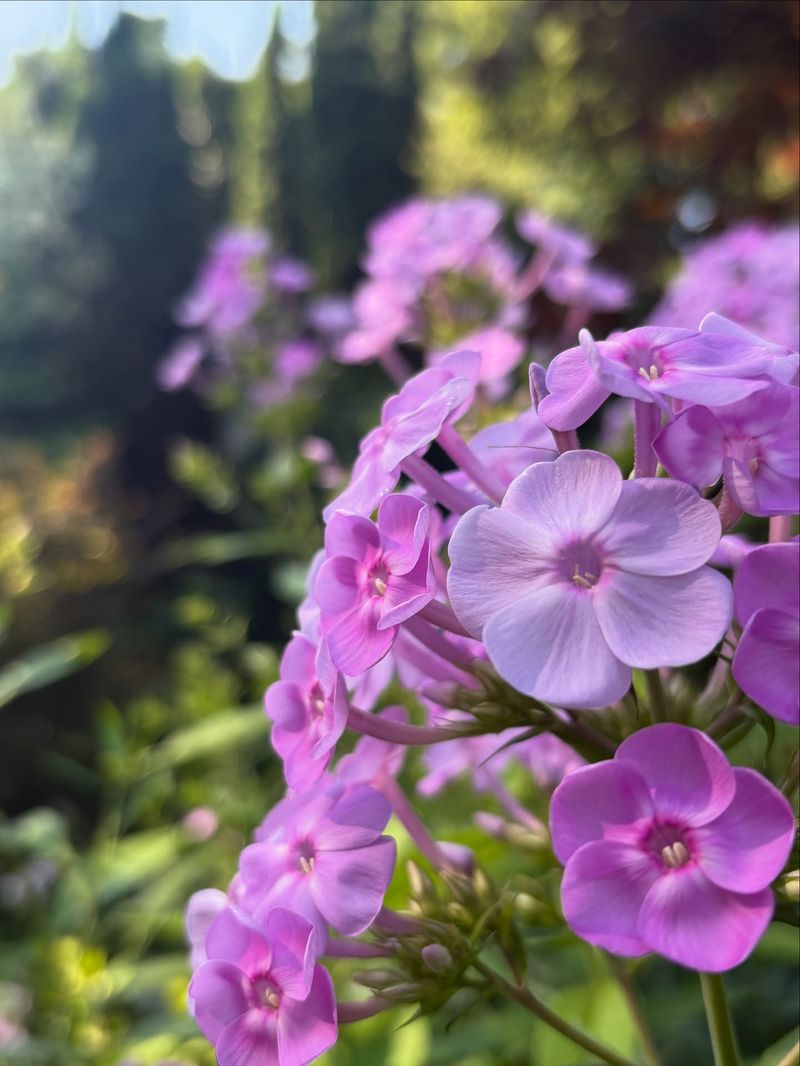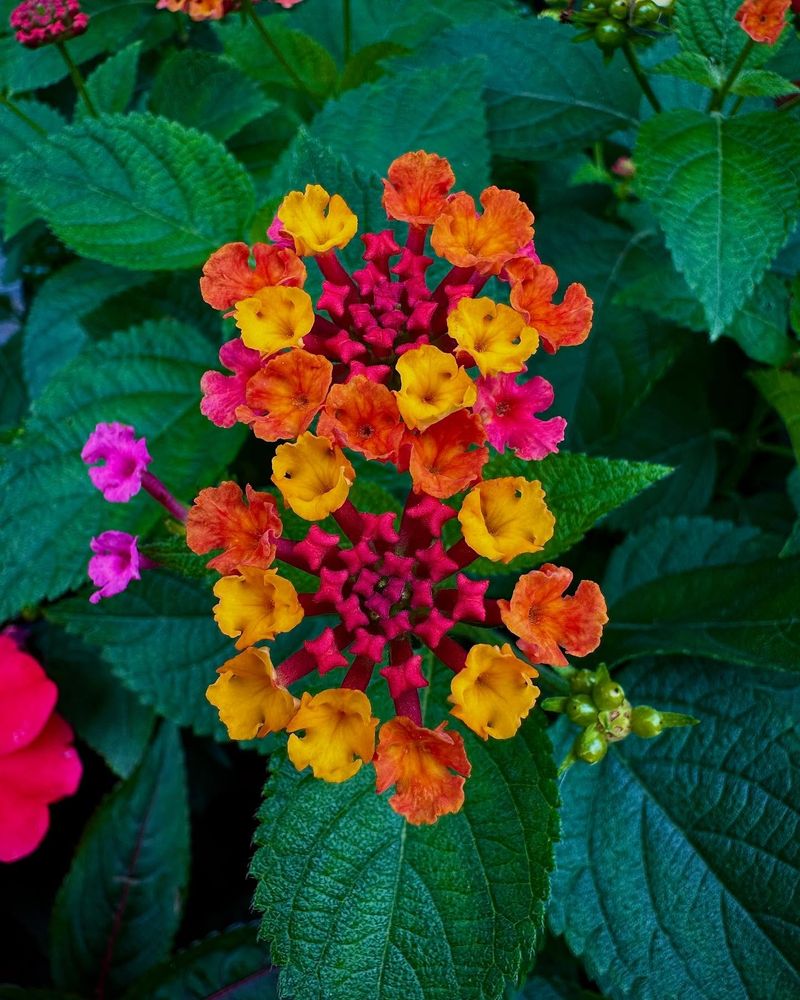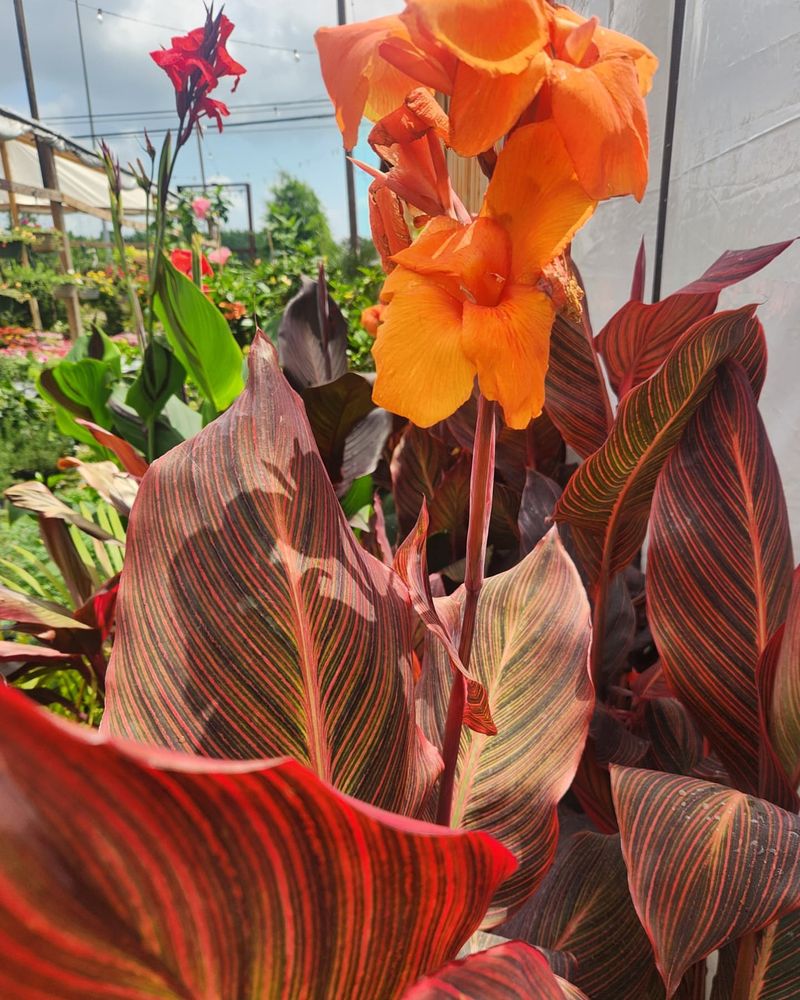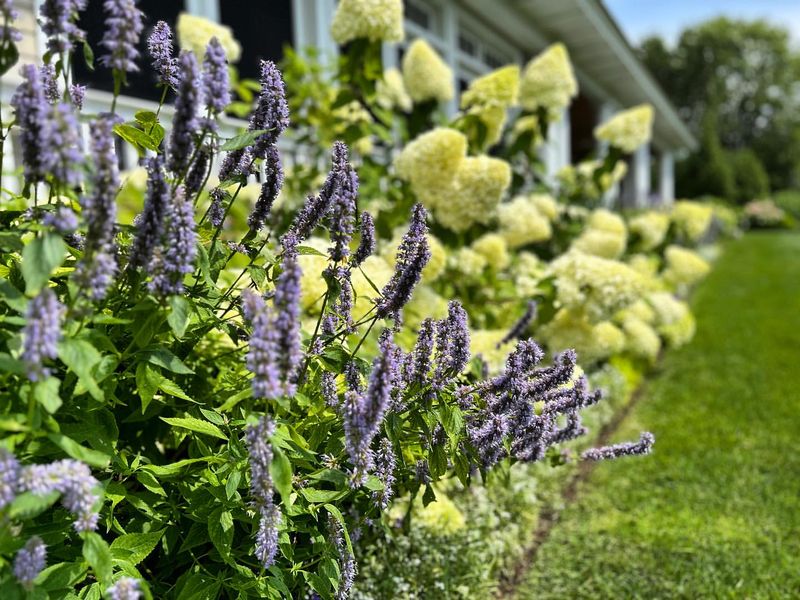Spring in Tennessee brings the magical return of ruby-throated hummingbirds, those tiny aerial acrobats that dazzle us with their iridescent feathers and hovering abilities.
Planting the right flowers can transform your yard into a hummingbird haven, providing these tiny travelers with much-needed nectar after their long migration.
By adding these nectar-rich plants to your garden now, you’ll create a welcoming pit stop that will keep hummingbirds returning throughout the season.
1. Cardinal Flower
Cardinal flowers produce stunning spikes of brilliant red blooms that hummingbirds simply can’t resist. Native to Tennessee’s moist areas, these striking perennials thrive in partial shade and wet soil.
Their tubular flowers perfectly match a hummingbird’s specialized bill. Even better, they bloom from July through September, providing nectar during peak migration times. Cardinals are relatively low-maintenance once established, returning year after year with minimal care.
2. Trumpet Honeysuckle
Unlike its invasive Japanese cousin, native trumpet honeysuckle offers hummingbirds a perfect nectar source without taking over your garden. The trumpet-shaped red and gold flowers emit a sweet fragrance that humans enjoy too!
This vigorous vine can climb trellises, fences, or arbors, creating beautiful vertical interest. Hummingbirds particularly love how the tubular blooms perfectly accommodate their long bills. Plant in full sun to part shade for best flowering results.
3. Bee Balm
Bee balm’s vibrant tufted flowers in red, pink, or purple create a fireworks display in summer gardens that hummingbirds find irresistible. This native perennial spreads enthusiastically, forming aromatic clumps that fill spaces beautifully.
Beyond attracting hummingbirds, bee balm draws butterflies and, true to its name, bees! Look for mildew-resistant varieties like ‘Jacob Cline’ for Tennessee’s humidity. The leaves make a delightful tea that pioneers used for medicinal purposes.
4. Coral Bells
Don’t let their delicate appearance fool you—coral bells are tough Tennessee garden performers that hummingbirds adore. Their dainty bell-shaped flowers dangle from tall, slender stems above attractive foliage that comes in countless colors.
Modern varieties offer leaves in purple, caramel, silver, and more, providing multi-season interest even when not blooming. Hummingbirds dart between the tiny flowers, sipping nectar from each bell. Plant them in partial shade where their colorful leaves can brighten woodland garden edges.
5. Scarlet Sage
Scarlet sage creates towers of fiery red blooms that act like hummingbird magnets in Tennessee gardens. This easy-to-grow annual produces nectar-filled flowers on upright spikes that can reach 3 feet tall.
The brilliant red color signals to passing hummingbirds that sweet nectar awaits. Try planting scarlet sage in containers near windows or patios where you can enjoy the hummingbird visits up close. For best results, provide full morning sun with afternoon shade during Tennessee’s hot summers.
6. Penstemon
Penstemon’s tubular blooms seem custom-designed for hummingbird beaks. These Tennessee-friendly perennials produce clusters of bell-shaped flowers in shades of red, pink, purple, and white atop sturdy stems.
Hummingbirds particularly favor the red varieties, which they can spot from impressive distances. Many native species thrive in Tennessee’s climate with minimal care once established. Their drought tolerance makes them perfect for sunny, well-drained spots where other plants struggle.
7. Flowering Tobacco
Evening gardens come alive with flowering tobacco’s sweet perfume that attracts night-feeding moths and daytime hummingbirds alike. The star-shaped blooms in white, pink, red, or lime green open fully in late afternoon, releasing their intoxicating fragrance.
Hummingbirds especially love the varieties with tubular flowers in bright colors. This easy-growing annual self-seeds readily in Tennessee gardens. Plant near patios or windows to enjoy both the fragrance and the hummingbird visits during summer evenings.
8. Columbine
Columbine’s unique spurred flowers dangle like tiny lanterns, creating perfect feeding stations for returning hummingbirds. Native to woodland areas, these charming perennials thrive in Tennessee’s partially shaded gardens.
The backward-pointing spurs contain sweet nectar that only hummingbirds and certain moths can reach. Early-season blooming makes columbine especially valuable for hungry spring migrants. After flowering, the blue-green foliage continues providing garden interest. They self-seed enthusiastically, creating charming colonies over time.
9. Foxglove
Foxglove’s dramatic spires of speckled, tubular flowers create vertical drama while providing hummingbirds with nectar-filled feeding tubes. These biennial or short-lived perennials self-seed readily in Tennessee gardens, returning year after year.
The spotted throats of each bell-shaped bloom guide hummingbirds to the nectar within. While most parts are toxic if eaten, this doesn’t affect their wildlife value. Plant foxgloves in woodland edges where they receive morning sun and afternoon shade for best performance.
10. Red Hot Poker
Red hot poker’s torch-like flower spikes bring dramatic flair to Tennessee gardens while serving as hummingbird feeding stations. The tubular flowers transition from fiery red at the top to yellow at the bottom, creating a flame effect in the landscape.
Their exotic appearance belies their tough nature—they handle Tennessee’s heat and humidity with ease. Hummingbirds can’t resist the nectar-rich blooms that appear from late spring through summer. Plant in full sun with good drainage for best flowering performance.
11. Butterfly Bush
Butterfly bush produces honey-scented panicles of tiny blooms that attract not just butterflies but hummingbirds too! The arching branches covered with purple, pink, or white flower spikes create a beautiful fountain effect in the landscape.
Choose compact, non-invasive varieties for Tennessee gardens. Hummingbirds particularly love darting among the densely packed florets. Deadheading spent blooms encourages continuous flowering from summer until frost. Their drought tolerance makes them perfect for hot Tennessee summers.
12. Zinnia
Zinnias bring easy summer color while providing hummingbirds with nectar-filled landing pads. These cheerful annuals bloom in nearly every color except true blue, with single varieties being most attractive to hummingbirds.
Children love growing these fast-sprouting seeds, making them perfect family garden projects. Beyond hummingbirds, zinnias attract butterflies and beneficial insects. Plant in full Tennessee sun for strongest stems and most abundant flowering. Cutting flowers regularly encourages more blooms throughout summer.
13. Coral Honeysuckle
Coral honeysuckle offers all the hummingbird appeal of its invasive cousins without the aggressive growth. This Tennessee native vine produces clusters of tubular coral-red flowers perfectly shaped for hummingbird bills.
Unlike Japanese honeysuckle, this well-behaved climber won’t take over your garden. The blue-green foliage provides a beautiful backdrop for the bright blooms. Red berries follow the flowers, attracting songbirds and extending wildlife value. Train it on fences or trellises for vertical interest.
14. Fuchsia
Fuchsia’s dangling, ballerina-like blooms seem designed specifically for hovering hummingbirds. Their exotic appearance adds a tropical touch to Tennessee gardens, especially in hanging baskets or containers where they can be appreciated up close.
In Tennessee’s climate, fuchsias perform best in morning sun with afternoon shade. The pendant flowers in combinations of red, purple, pink, and white provide continuous blooming through summer. Watch hummingbirds hover beneath the blooms, perfectly matching their bills to the flower shape.
15. Phlox
Garden phlox creates sweetly scented clouds of star-shaped flowers that hummingbirds visit repeatedly. This Tennessee-friendly perennial produces large flower heads in white, pink, lavender, or red atop 3-4 foot stems.
The fragrant blooms appear in mid-summer when many spring flowers have faded. Hummingbirds flit from floret to floret within each flower cluster. Choose mildew-resistant varieties for best performance in Tennessee’s humidity. Their native status makes them well-adapted to local growing conditions.
16. Cigar Plant
Cigar plant’s tubular orange-red flowers with white tips truly resemble tiny cigars—and hummingbirds find them irresistible! This tender perennial grows as an annual in Tennessee, blooming non-stop from spring until frost.
The unusual flowers emerge from attractive glossy foliage on compact, bushy plants. Hummingbirds particularly appreciate how the tubular blooms perfectly fit their specialized bills. Plant in containers or as bedding plants in full sun. Their continuous blooming makes them valuable for maintaining hummingbird interest throughout the season.
17. Lantana
Lantana’s clustered flowers in sunset colors create butterfly-and-hummingbird buffets all summer long. These heat-loving plants thrive during Tennessee’s hottest months when other flowers may struggle.
Each flower cluster contains dozens of tiny tubular blooms that open in sequence, creating multi-colored displays as they mature. Their drought tolerance makes them perfect for sunny, challenging spots. Though treated as annuals in Tennessee, they grow quickly and bloom abundantly from planting until frost.
18. Petunia
Modern petunias, especially the newer ‘Supertunia’ types, produce abundant nectar that attracts hummingbirds all season. Their trumpet-shaped blooms in vibrant colors create waves of color in Tennessee gardens and containers.
Unlike their grandparents, today’s petunias are self-cleaning and continue flowering without deadheading. Hummingbirds particularly favor the bright red and purple varieties. Their trailing habit makes them perfect for hanging baskets positioned near windows where you can watch hummingbirds visit.
19. Canna Lily
Canna lilies bring bold tropical drama while offering hummingbirds nectar-rich blooms on sturdy stalks. Their paddle-shaped leaves in green, burgundy, or striped patterns provide striking foliage even before the flowers appear.
The orchid-like blooms in red, orange, yellow, or pink stand well above the foliage. Hummingbirds can easily hover beside the tall flower spikes. Though tropical in origin, cannas perform beautifully during Tennessee’s hot summers. Their rhizomes can be stored over winter and replanted each spring.
20. Anise Hyssop
Anise hyssop combines licorice-scented foliage with spikes of lavender-blue flowers that hummingbirds visit repeatedly. This native perennial grows upright with attractive, aromatic leaves that smell like anise when crushed.
The tiny tubular flowers, densely packed on vertical spikes, provide weeks of nectar for hummingbirds. Beyond attracting wildlife, the leaves make delicious herbal tea. Their drought tolerance makes them perfect for Tennessee gardens, thriving in full sun with minimal care once established.

